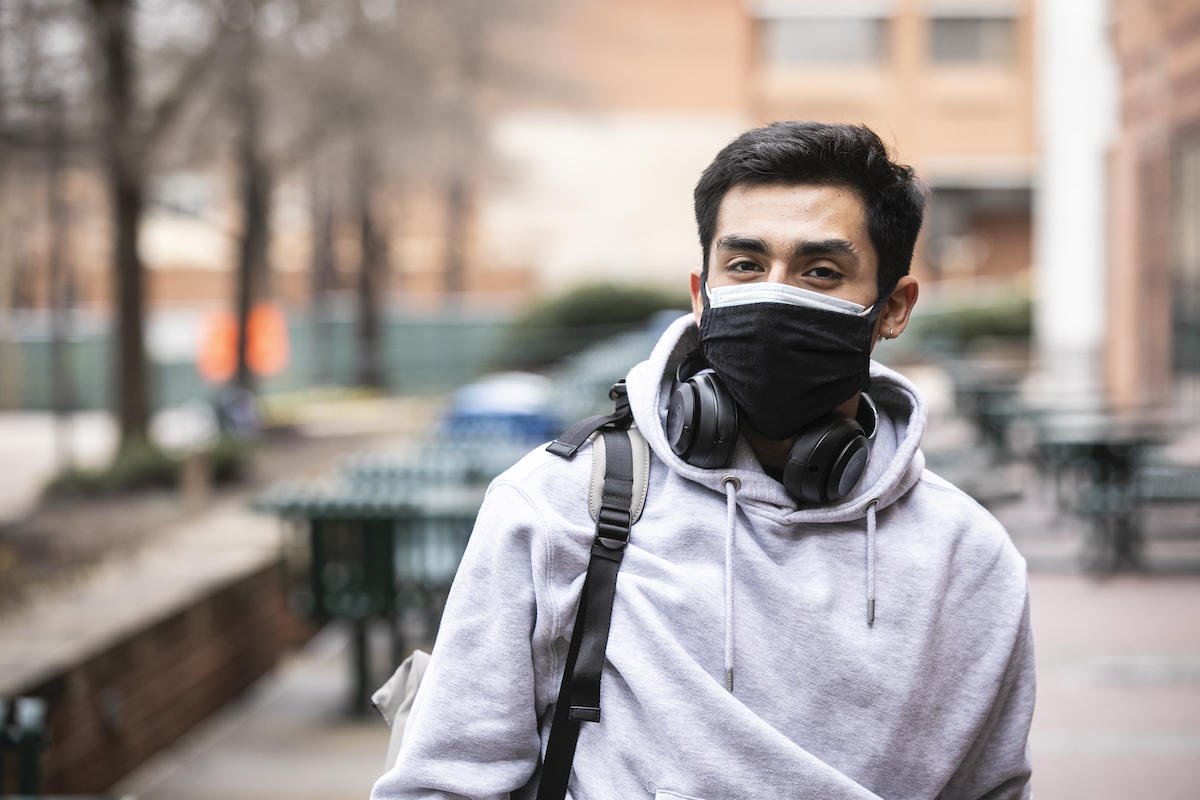Some members of our community may have questions about the guidance issued on Feb. 10 by the Centers for Disease Control and Prevention (CDC) on the use of masks and face coverings to help prevent the spread of COVID-19.
In addition to practicing good hand hygiene, staying home when unwell and when directed to isolate or quarantine by a health professional, staying six feet apart, filling out the Mason COVID Health Check and participating in on-campus surveillance testing, wearing face coverings is a key part of the strategy for safe repopulation of our campuses.
Q: Has Mason changed its face covering policy?
A: No, Mason’s face covering policy has not changed. Face coverings are required
- Inside a university building, vehicle or other facility.
- Outside on Mason property when physical distancing of six feet cannot be consistently maintained.
- At any event or gathering organized by a university department, student group or external organization.
More details about the policy can be found here.
Q: Are Mason’s face coverings sufficient?
A: The face coverings provided by Mason are tight-fitting masks with two layers of tightly woven cloth (two ply), and meet CDC recommendations for two or more fabric layers.
Q: How do I ensure my mask fits properly?
A: A mask should cover your nose and mouth, be secure under your chin, and fit snugly against the sides of your face. See these guidelines from the CDC for more details.
Q: Do I need two cloth masks?
A: No, the CDC does not currently recommend two cloth masks. Your cloth mask should have at least two or more layers and fit snugly. Alternatively, the CDC recommends one disposable mask underneath a cloth mask.
Q: How would I double mask?
A: A tight-fitting cloth mask over a disposable mask can help reduce or eliminate gaps in the disposable mask.
Q: Do I need an N95 mask?
A: No, the CDC does not recommend N95 masks for everyday use; they should be reserved for health care professionals who interact with potentially infectious patients.

